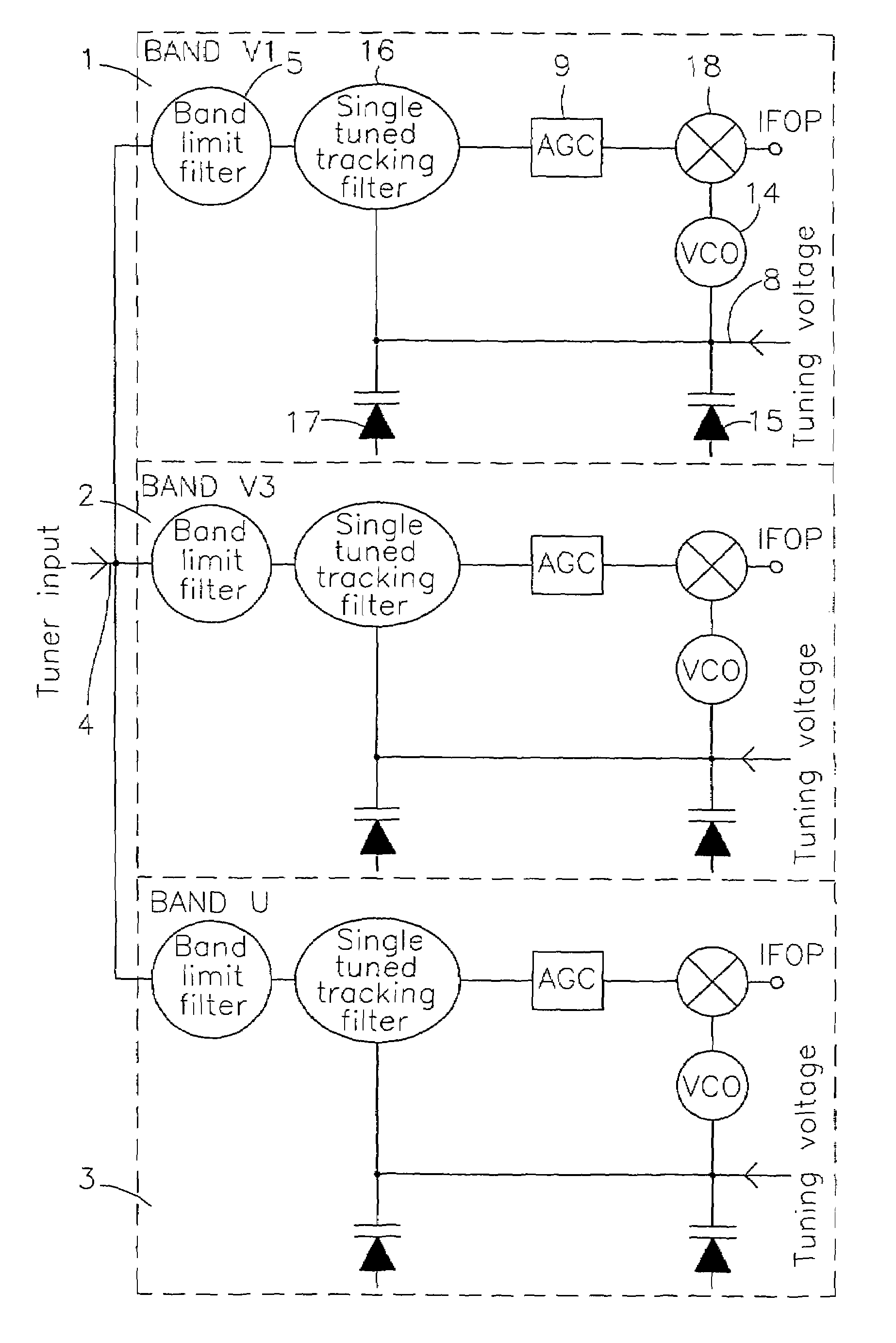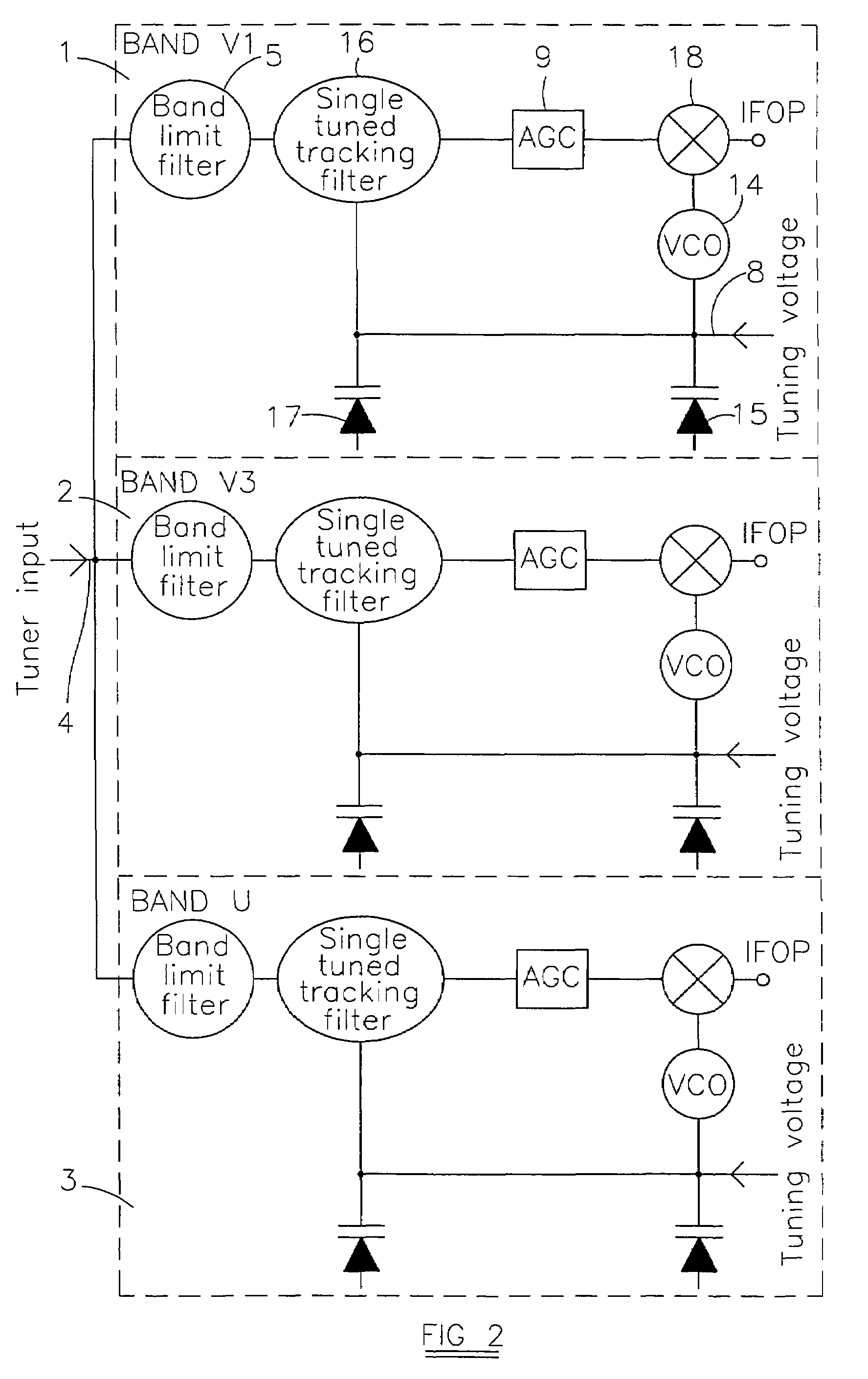Tuner
a technology of a tuner and a conversion tuner, which is applied in the direction of television systems, multi-resonant circuits tuned to different frequencies, and discontnuous tuning with seperate pre-tuned circuits, etc. it can solve the problems of strong potentially interfering channels occupying neighbouring frequencies to desired channels, unsatisfactory channels may be of greater amplitude, and not always the case, so as to reduce production alignment costs, simplify construction, and reduce cos
- Summary
- Abstract
- Description
- Claims
- Application Information
AI Technical Summary
Benefits of technology
Problems solved by technology
Method used
Image
Examples
Embodiment Construction
[0027]The tuner of FIG. 2 comprises the three bands or channels 1, 2, 3 as in the tuner of FIG. 1. Again, as the three channels are substantially identical other than for their frequency coverage, only the channel 1 will be described.
[0028]The channel 1 shown in FIG. 2 differs from that shown in FIG. 1 in that the single-tuned image reject filter 6 and the associated diode are omitted, as are the double-tuned tracking filter 10 and associated diodes 11 and 12. Instead, a single-tuned tracking filter 16 is disposed between the band limit filter 5 and the AGC circuit 9. The filter 16 is aligned to the desired channel and is required to track with the local oscillator frequency. However, because the filter 16 is of relatively low Q type, the alignment can be relatively coarse because the roll-off in frequency response is relatively shallow so that misalignments during tracking do not significantly affect the performance of the tuner.
[0029]The channel 1 shown in FIG. 2 also differs from...
PUM
 Login to View More
Login to View More Abstract
Description
Claims
Application Information
 Login to View More
Login to View More - R&D
- Intellectual Property
- Life Sciences
- Materials
- Tech Scout
- Unparalleled Data Quality
- Higher Quality Content
- 60% Fewer Hallucinations
Browse by: Latest US Patents, China's latest patents, Technical Efficacy Thesaurus, Application Domain, Technology Topic, Popular Technical Reports.
© 2025 PatSnap. All rights reserved.Legal|Privacy policy|Modern Slavery Act Transparency Statement|Sitemap|About US| Contact US: help@patsnap.com



